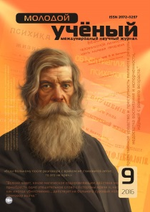The rate of modern life imposes a man to the permanent psychological and intellectual overload. In these conditions, physical activity is a relatively comfortable and safe method of getting rid from aggressiveness and negative emotions. Any activity has inner motives. The total of such motives forms the motivational sphere of the activity. Motivation is a hierarchically structured system characterized by an orientation, stability and dynamic quality. Creation of the steady motives is the important condition of any activity.
It is important to select adequate methods and suitable tests for motivation and reasons study. I analyzed the methods of motivation study, determined the concept of the motivation phenomenon, the conditions of motivation formation, studied the rate of women’s motivation to physical activity, and compared the existent methods of motivation estimating.
Let’s study the concept «motivation». In modern psychology motivation is determined as the internal state of organism determining its behavior. Т. Е. Orlov and Н. P. Anikeeva (1998) considered motivation as the system of factors, determining behavior of a man, his orientation and activity.
The system of inner forces is subjected to the principles of dominant, hierarchy of structures and functions of co-operation of man. Changes and functions of this system depend on the ability of psyche to transform and integrate the actions of biological and social determinant of vital functions of man.
In the process of motivation the long-term and short-term needs of a person are estimated. Motivation has such functions, as:
incentive;
selective;
cognitive;
aim-modeling;
sense-making;
regulatory.
For example, the cognitive basis is expressed in a capacity for a realistic estimation and rising of aims and choice of tasks on the basis of cognitive, cogitative processes. The past experience of a man is compared with the real situation and designs all possible turns of events. This function allows providing adequate behaviors of a man.
Aim-modeling function sets the aim which can satisfy the person’s need taking into account the past, present and future of personality. Images become an aim when they acquire personal sense. Personal sense is the individualized reflection of reality. Reality expresses attitude of personality toward those objects in order to develop this activity.
The regulatory function of motivation is expressed in the directing the action of man on achieving of the person’s aim.
According to B. I. Dodonova (1973) all activity motives can be divided into groups according to four motivational factors:
the final result;
the reward;
the subject behavior;
the attractiveness of the activity process.
Dynamic quality of motivational sphere is shown up in the change of force, both separate reasons and motivation on the whole. A dynamics of reasons can be both positive and negative in relation to efficiency activity. Stability of motivation can change. I have noticed that primary motives begin to show up only in certain conditions.
The dynamic quality of motivational sphere is related to the psycho-physiological features:
stability of reason
force and expressiveness
switching from one reason to other
emotional coloring.
Motives can be strong, middle and weak. High motivation of an achievement combines with an enhance able persistence. Force of motivation and efficiency of decision of task are a result of co-operation of three independent values:
reason;
subjective probability of success;
attractiveness of consequences of success or failure [9].
In connection with power of the motive it is necessary to consider such phenomena, as super motivation and frustration.
Super motivation arises in situations, when reason is so strong, that interferes with the action of man. Frustration arises in those cases, when reason is very strong, but there is an insuperable obstacle for it realization.
I think, motivation is the internal state of organism which stimulates it to behave in a certain way. The system of incentive forces is submitted to principles of domination, to hierarchy principle of structures and functions of co-operation of man. Changes and functions of this system depends on psyche ability:
To mediate
To transform
To integrate the actions of biological and social determinant of vital functions of man.
Force of reason, as index of insuperable aspiration of personality, is estimated on a degree, depth of realization:
Understanding
Appropriations
Acceptance
Exactly understanding the necessity and reason on its intensity.
In the conditions of forming of motivation to physical activity supporting reasons are important. One of reasons of low physical activity is absence of optimal motivational complex. For optimal physical activity of personality adequate estimation of the forces, possibilities and difficulties is important.
For women motivation to physical activity differs from masculine on priorities. Sporting beauty and grace of motions, along with the harmonious state, here that interests fair sex.
As necessities and interests of women are closely related to the emotions, a large value has a psychological comfort, positive mood.
The positive attitude is formed with the help of emotions. The difference in meaningfulness of motives of sporting activity increases for the sportsmen of different sex and in the course of time. Formation of women’s meaningful motives is supported by positive emotions.







